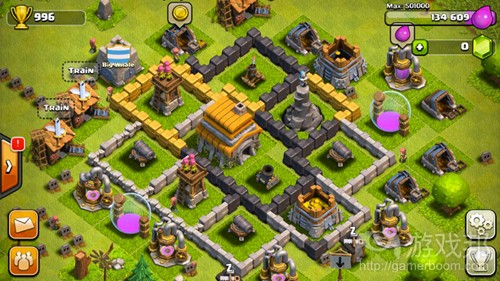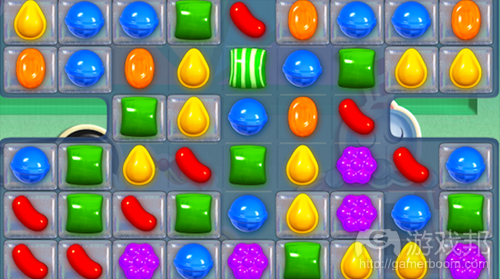主机游戏设计与免费模式为何难以兼容?
作者:Chris Wright
时至今日,我们已经无法否认免费游戏在行业中的人气和地位。虽然有些硬核玩家一向鄙视免费模式,将其视为流行一时的商业模式,但《Clash of Clans》、《Candy Crush》以及《Real Racing 3》所取得的巨大经济成就却日益令人无法忽视。
为此,索尼和微软也开始接纳免费模式将主导未来的现实,并发布了《小小大星球2》、《Planetside 2》以及《War Thunder》等游戏。但是,在主机游戏设计领域历史悠久的发行商和开发商真的理解免费模式的概念,真的拥有向这一领域转型的技能吗?
发行商和开发商通常忽视的一点就是,免费模式是一种游戏类型,而不仅仅是一种商业模式。因此,简单地创造一款游戏,在其中加入一些IAP元素,去掉其售价标签并不意味着游戏就能获得成功。其方法远比这种做法更彻底,开发者不该急于创造产品,而应该先理解如何运营一项服务。
免费模式的核心是优秀的玩法,玩家在免费游戏中掏钱的可能性远比其玩游戏时长更容易预测。付费产品若出自好品牌,或者拥有强大的市场营销推广,就有可能说服玩家购买游戏。采用了免费模式的游戏应该在玩家一进入时就提供乐趣,这样才有可能获得回报。这里的关键在于保持服务意识,要持续取悦用户,好比是在《美女餐厅》中你要一些关注和照顾食客的心情。
再看看你花了40英磅购买的AAA游戏,并将其与免费增值游戏进行对比,这两者的差距令人震惊。免费游戏邀请玩家参与,解释游戏规则,以及保证游戏趣味性的方法与付费游戏极为不同。许多玩家从来不会完成一款主机游戏——这对于事先已经收到钱的开发者和发行商来说并不是什么大问题,而在视粘性为命根的免费游戏领域,玩家流失就是一个灾难了。
免费游戏还适用于不同类型的游戏,可以用来延伸和发展玩家基础。而拥有确定故事的游戏就不太适合这种模式,比起具有天然开放性的免费游戏,它更适合采用章节式的销售方法。免费模式适用于网络、移动和社交平台的一个原因就是,它对发行商和开发者来说相对更容易整合分析工具,并使用这些数据即时更改游戏设计,以便持续吸引玩家,增加留存率。
这种响应式,个性化的方法是《Candy Crush Saga》(游戏邦注:据称该游戏仅在移动平台的日常收益就超过85万美元)等游戏成功的关键。Supercell和Wooga等年轻的公司正全力开拓免费模式,他们为这一领域注入新鲜血液而非陈旧的主机游戏基因。
若要在主机游戏植入免费模式,你就要克服一系列挑战,例如索尼和微软冗长的认证流程,以及复杂的游戏设计调整(以免游戏失衡)。因此,我们所看到的一些原创免费主机游戏通常都很短小,教程也比较简陋,其盈利结构更像是二手车销售人员在极力兜售车子,而不是提供将主动权交给玩家的愉悦游戏体验。
要在主机平台创造成功的免费游戏,依靠翻新旧版游戏的做法是不可取的,只有一开始就以免费模式的理念来设计游戏才有望胜出,这方面的典型包括《坦克世界》和《英雄联盟》。
索尼和微软应该对免费游戏题材怀有敬畏之心,并推出有利于这类游戏繁荣发展的系统,这意味着该系统应该支持这些游戏的持续更新和调整。这还需要开发者采用一种持续的分析导向型“测试和学习”循环,从而创造个性化和富有吸引力的体验——但这究竟多久才能看到成效则仍然有待观望。(本文为游戏邦/gamerboom.com编译,拒绝任何不保留版权的转载,如需转载请联系:游戏邦)
Why console game design and free-to-play don’t mix – and what needs to change
Chris Wright
From just a distant drum beat ten years ago to a deafening crescendo today; there’s no denying the popularity of free-to-play games right now. Although some hardcore players tend to dismiss free-to-play as a fad or cynical business model, the huge financial success of games like Clash of Clans, Candy Crush and Real Racing 3 has made this movement increasingly difficult to ignore.
As a result, Sony and Microsoft are now embracing a free-to-play future, with the release of titles like LittleBigPlanet, Planetside 2 and War Thunder. However, do publishers and developers with a long heritage in console game design really have the understanding and skills required to make the transition to free-to-play?
The thing that publishers and developers often overlook is that free-to-play is a type of game and not just simply a business model. Therefore simply creating a game, throwing in some in-app purchases and giving it away for free won’t equal free-to-play success. The approach is much more fundamental than this and developers need to stop thinking about building a product and start to better understand how to run a service.
At the core of free-to-play is good gameplay, there is nothing more predictive about how likely someone is to spend money in a free-to-play game than how long they play. Unlike premium products where a good brand or strong marketing can convince players to buy the game, with free-to-play the game needs to be fun from the moment players start playing if it is going to have any hope of making a return on the investment. This drives a service mentality; keeping the customers happy is key and as we all know from playing Diner Dash your players require constant care and attention.
Tekken Revolution is one console game series that went free-to-play recently, with mixed success.
Take a look at any triple-A game where you pay £40 up front and compare it to a similar free-to-play game and the differences are striking. The way the game invites players in, makes sure the game is explained and the effort to make sure the game is fun is very different from a full price game. Most console games simply never get played to completion – not a problem for developers and publishers when the money has already been spent, but in the free-to-play world where engagement is so vital, losing players is a major problem.
Free-to-play also favours different types of games, ones that can be extended and added to and evolve with the playerbase. Games with a defined story, for example, are less suitable and work better as episodic games sold in chunks of gameplay compared to the fully open ended nature of free-to-play. One reason why free-to-play works online, on mobile and on social networks, is because it’s relatively easy for publishers and developers to integrate analytics and use that data to make informed real-time game design changes to keep players engaged and increase retention.
This responsive, personalised approach is central to the success of games like Candy Crush Saga, which generates a staggering $850,000 in revenue every single day, from mobile alone. It’s no surprise to find young companies like Supercell and Wooga trailblazing in free-to-play right now – they have come fresh to free-to-play without a legacy in old-world console development.
With free-to-play on console you’ve got a unique set of challenges to overcome, from Sony and Microsoft’s lengthy certification processes through to much more complex games where changes need to be made carefully so the game is not unbalanced. As a result, some of the initial free-to-play console games that we’ve been working with have come up short, offering a poor tutorial and on boarding process, and a monetisation structure that is much closer to a used car salesman than an enjoyable experience that puts the control in players’ hands.]
The key to creating successful free-to-play games for consoles won’t come from re-hashing old games, but from developing games which are designed to be free-to-play from their inception, like World of Tanks and League of Legends.
Sony and Microsoft need to be respectful of the free-to-play genre and deliver the ecosystem that will allow these games to flourish, which means allowing games to evolve on their system through constant updates and changes. This needs to be combined with developers adopting an ongoing analytics-driven ‘test and learn’ cycle to create personalised and engaging experiences – but how long it takes for the penny to drop remains to be seen.(source:edge-online)
下一篇:分析整体游戏设计的作用及重要性









































 闽公网安备35020302001549号
闽公网安备35020302001549号